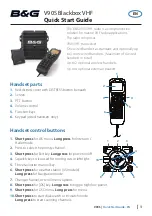
MX8000 Installation and Operation Guide
6–4
Important!
Due to the increasing number of formats a single line can accept and the wide variety of
manufacturer’s specifications for handshake/acknowledgement tones required for their digital
dialers to communicate, we strongly recommend observing the following rules for handshake
tone order.
1. Some SIA DCS communicators respond to the 2300Hz handshake. Always place the 2225Hz handshake
tone first for line cards accepting SIA DCS format.
2. Some Contact ID communicators respond to the 1400Hz handshake followed by the 2300Hz handshake
instead of the dual tone 1400-2300Hz handshake (NAPCO Gemini communicators have been known to
do this). Line cards accepting Contact ID should not have the 1400Hz followed by the 2300Hz before the
dual tone 1400-2300Hz handshake.
3. SIA DCS communicators will respond to the Modem II and IIe handshakes. If a line card is to accept
both SIA DCS and Modem II or IIe, the 2225Hz handshake must come before the Modem II and Modem
IIe handshakes.
4. Some Westec panels will respond to the Modem II handshake. If a line card is to accept both Westec and
Modem II formats, the Westec handshake must come before the Modem II handshake.
5. Some of ITI panels don't respond to the default 2225Hz handshake. They need a lot longer handshake
duration than what we have in the MX8000 receiver. You don't want to change the default 2225Hz
handshake (1st handshake group) because it's optimized for SIA panels. What you should do is to
program the 2nd 2225Hz handshake group with a long handshake duration (say 2550 ms). This way, a
SIA panel responds to the 1st 2225Hz handshake and ITI panels respond to the 2nd 2225Hz handshake.
6. 4/1 pulse format and 3/1 with check sum pulse format look exactly alike to the receiver. Both respond to
the 1400Hz or 2300Hz handshake and both contain 5 pulses. You cannot send both signals to the same
line card. To process data correctly, you must specify in the line card handshake option which format
you are expecting to receive. To receive 4/1 pulse format, you must program one of the six handshake
groups of the line card to be 4/1 1400Hz and/or 4/1 2300Hz (This is the default setting). If you want to
handle 3/1 with check sum, program the line card with 1400Hz and/or 2300Hz. If both 2300Hz and 4/1
2300Hz are programmed in a line card, 4/1 is assumed regardless of what order you program handshake
groups. If your customer must handle both 4/1 and 3/1 with check sum formats, he or she must send the
signals to separate line cards.















































